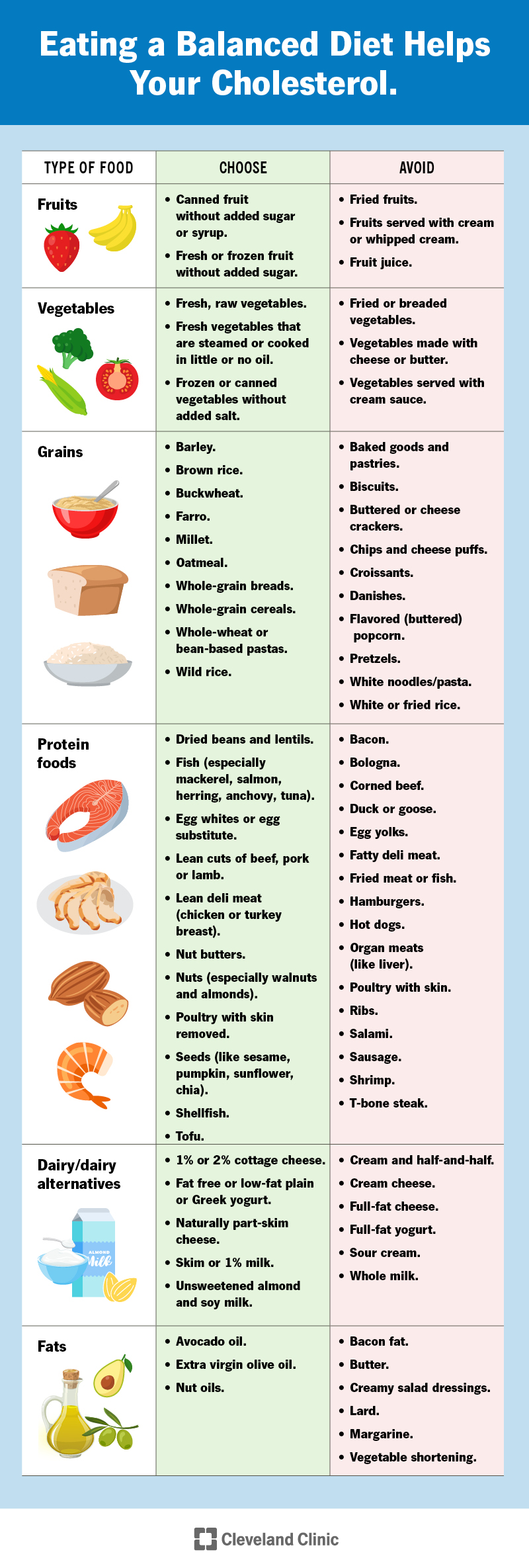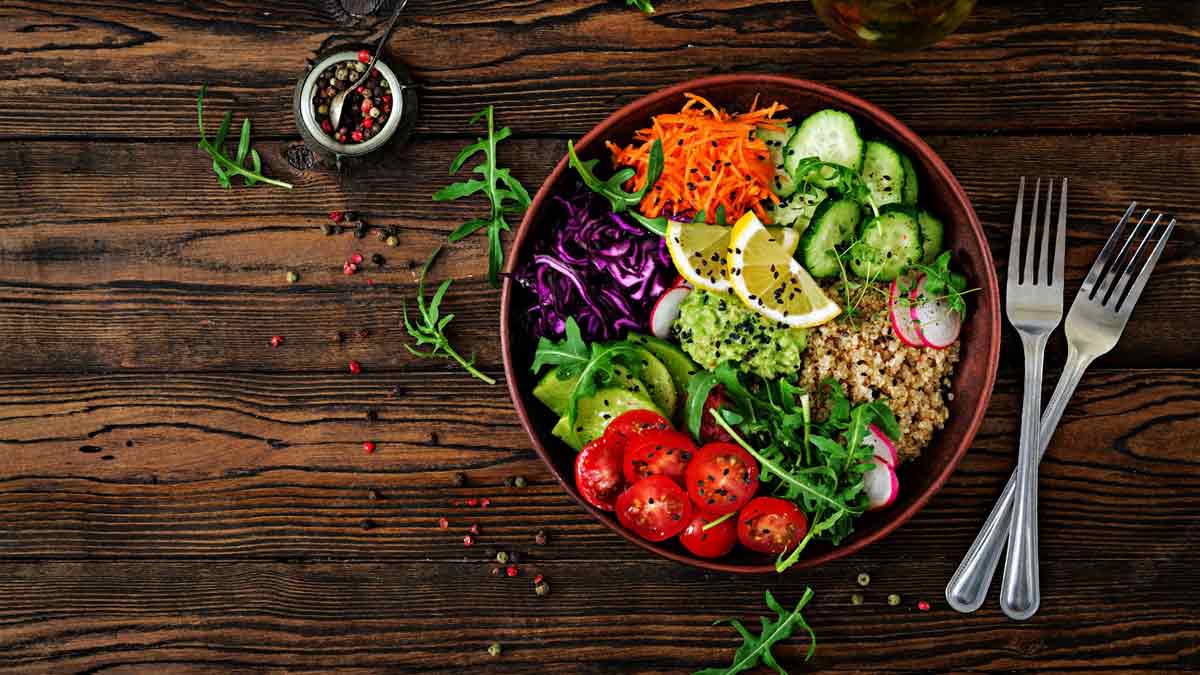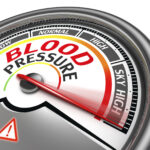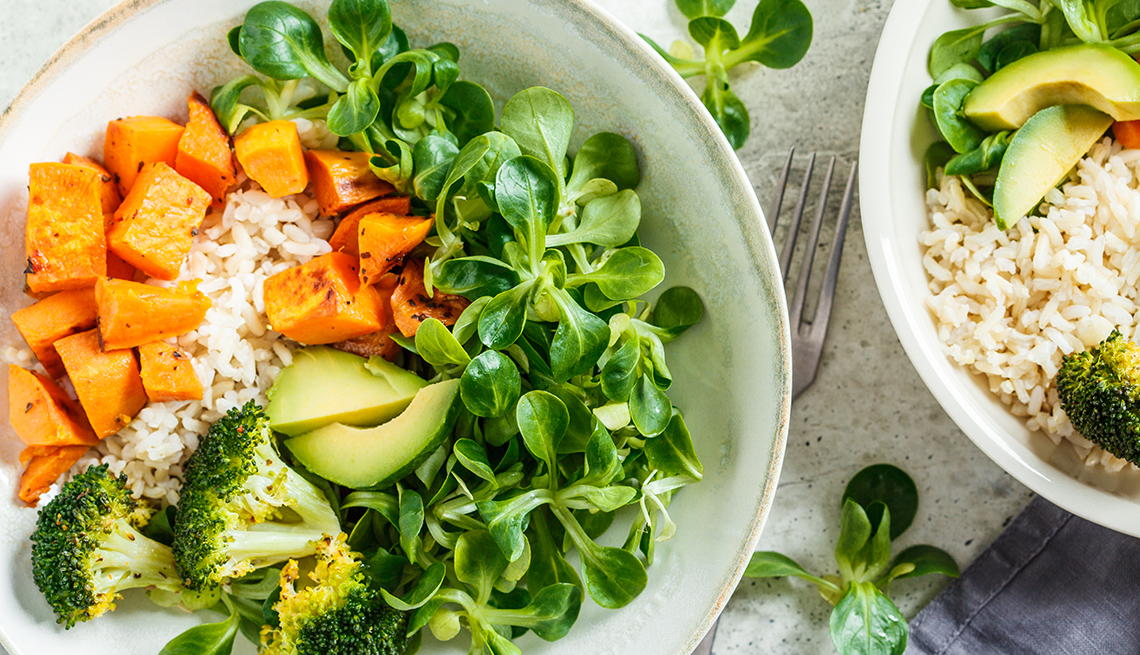Diet For High Cholesterol
Diet for high cholesterol? Yes! Because your diet plays a significant role in influencing your cholesterol levels. To effectively lower your cholesterol, it’s important to reduce your intake of foods that are high in saturated fat and eliminate trans fats from your diet altogether.
These types of fats contribute to increased levels of low-density lipoprotein (LDL), commonly known as “bad” cholesterol.
Incorporating more soluble fiber and plant-based foods into your meals can help reduce LDL cholesterol levels while providing essential nutrients needed for an active and vibrant life.
Foods rich in soluble fiber, such as oats, beans, lentils, fruits, and vegetables, can aid in cholesterol management. By making these dietary changes, you can promote better heart health and overall well-being.
Does Diet Impact Cholesterol Levels?
Yes, your diet plays a crucial role in managing cholesterol levels in your body. Cholesterol is a waxy, fat-like substance that your body needs for vital functions, and your liver produces enough to meet your needs.
However, the cholesterol you consume from food adds to the overall amount circulating in your bloodstream, even though it’s not necessary. In fact, dietary cholesterol accounts for about 20% to 30% of the cholesterol found in your blood, while the rest is produced by your liver.
To lower your cholesterol, it’s essential to limit foods high in saturated fats and completely avoid those containing trans fats. These fats increase the levels of low-density lipoprotein (LDL), often referred to as “bad” cholesterol, which can lead to plaque buildup in the arteries and elevate your risk of heart disease.
Conversely, incorporating more soluble fiber and plant-based foods into your diet can help reduce LDL cholesterol. Soluble fiber, found in foods like oats, beans, fruits, and vegetables, binds with cholesterol in your digestive system and helps eliminate it from the body.
Plant-based foods, especially those rich in healthy fats such as avocados, nuts, seeds, and olive oil, offer heart-protective benefits while lowering LDL levels.
It’s important to understand which foods raise or lower cholesterol to better manage your heart health. For those seeking personalized advice, consulting a dietitian can provide tailored guidance on how to adjust your diet for optimal cholesterol control and a healthier lifestyle.
Major Nutritional Source of Cholesterol
The primary source of cholesterol in our diet, known as dietary cholesterol, comes from animal products. This includes a variety of foods such as meats, cheeses, and dairy products. However, recent research indicates that dietary cholesterol itself may not be the main concern when it comes to managing cholesterol levels.
Instead, two types of unhealthy fats—saturated fat and trans fat—are more significant contributors to elevated levels of low-density lipoprotein (LDL), often referred to as “bad” cholesterol. Many foods that are high in dietary cholesterol also tend to contain these unhealthy fats, making it essential to focus on fat quality rather than solely on cholesterol content.
How to Lower Cholesterol Through Diet
To effectively lower your cholesterol levels through dietary changes, consider implementing the following strategies:
1. Increase Soluble Fiber Intake
Soluble fiber is particularly effective at reducing LDL cholesterol. This type of fiber dissolves in water and binds with bile acids (which contain cholesterol) to help eliminate them from your body.
Aim for a daily intake of 10 to 25 grams of soluble fiber, adjusting based on your calorie needs and consulting with a healthcare provider for personalized recommendations. You can increase your soluble fiber intake by incorporating the following foods into your diet:
- Legumes: Dried beans, lentils, and split peas
- Fruits: Apples, blackberries, and citrus fruits
- Grains: Oats and oat bran
- Whole grains: Brown rice
2. Limit Saturated Fat
Saturated fat is typically solid at room temperature and is found in various food sources. Common sources of saturated fat include:
- Processed Meats: Hot dogs, sausages, bacon, and pepperoni
- Fatty Cuts of Meat: Ribs, poultry with skin, and heavily marbled cuts
- Full-Fat Dairy Products: Butter, heavy cream, cream cheese, and sour cream
- Certain Oils: Coconut oil and palm oil
- Fried Foods
While your body does require some saturated fat for health, it’s easy to exceed the recommended limits. To maintain a heart-healthy diet, aim for saturated fat to comprise no more than 5% to 6% of your total daily caloric intake. Monitoring nutrition labels and being mindful of portion sizes can help you achieve this goal.
By focusing on these dietary adjustments, you can better manage your cholesterol levels and promote overall heart health.
| Calories you need per day | Saturated fat limit |
| 1,200 | 7 to 8 grams |
| 1,400 | 8 to 9 grams |
| 1,600 | 9 to 10 grams |
| 1,800 | 10 to 11 grams |
| 2,000 | 11 to 13 grams |
| 2,200 | 12 to 15 grams |
Maintaining a Balanced Approach to Cholesterol Management
While the suggested ranges for dietary fats, including saturated fat, are valuable guidelines, it’s important to remember that these recommendations are not rigid rules. Becoming overly focused on specific numbers and strict limits can lead to unhealthy eating habits, such as orthorexia, where individuals may obsess over food quality to the detriment of their overall well-being.
Moreover, nutrition experts warn that fixating on numbers can result in the unnecessary elimination of foods that may provide more health benefits than drawbacks.
For instance, while olive oil does contain some saturated fat, its numerous health benefits make it a valuable addition to your diet when consumed in moderation—up to four tablespoons a day is typically recommended.
Similarly, other foods high in saturated fat, such as avocados and walnuts, offer essential nutrients and healthy fats that contribute positively to your health.
The key to managing saturated fat intake is to consider the source of the fat. It’s generally acceptable to exceed the recommended limits slightly if the saturated fat comes from healthful foods. When in doubt, consulting with a registered dietitian can provide personalized guidance on which sources of saturated fat to limit and which can be enjoyed in moderation.

The Importance of Avoiding Trans Fats
Trans fats, created through the process of hydrogenating liquid vegetable oils, have historically been found in fast foods and processed products due to the use of partially hydrogenated oils. However, the U.S. Food and Drug Administration (FDA) took significant action in 2018 by banning the use of these oils in food, marking a positive step towards healthier dietary options.
Despite this progress, it’s crucial to understand that many fast foods and processed items can still be detrimental to your health. These foods often contain high levels of saturated fat and may still have trans fats due to cooking methods, such as frying. Trans fats are particularly harmful; your body has no need for them, and they provide no nutritional benefits. Therefore, it’s best to avoid them entirely whenever possible.
To effectively limit trans fats in your diet, steer clear of:
- Fast Food: Typically high in unhealthy fats and calories.
- Fried Foods: These are often cooked in oils that can introduce harmful fats into your meals.
- Commercial Baked Goods: Items like cookies, doughnuts, and pastries frequently contain trans fats due to the use of partially hydrogenated oils.
By focusing on the quality of fats in your diet and steering clear of trans fats, you can support better cholesterol management and overall health.
The Importance of Balanced Meals for Healthy Cholesterol Levels
To effectively manage your cholesterol levels through diet, it’s essential to focus on balanced meals that incorporate a variety of food groups. Eating a diverse array of foods ensures that you receive the necessary nutrients your body needs while also promoting heart health. Here’s a breakdown of the key components to include in your meals:
- Fruits: Aim for a variety of colorful fruits, as they are rich in vitamins, minerals, and antioxidants. Fruits like berries, apples, and citrus are especially beneficial due to their high fiber content, which can help lower LDL cholesterol.
- Vegetables: Incorporate plenty of vegetables, particularly leafy greens, cruciferous vegetables, and colorful options like bell peppers and carrots. These foods are low in calories and high in nutrients, helping to support overall health and well-being.
- Grains: Choose whole grains such as brown rice, quinoa, oats, and whole wheat products. These provide more fiber and essential nutrients compared to refined grains and can help regulate cholesterol levels.
- Protein Foods: Opt for lean protein sources, such as fish, poultry, beans, lentils, and nuts. Fatty fish like salmon and mackerel are particularly beneficial due to their omega-3 fatty acids, which can help reduce inflammation and lower cholesterol.
- Dairy/Dairy Alternatives: Select low-fat or fat-free dairy options, or consider plant-based alternatives fortified with calcium and vitamin D. These choices can provide essential nutrients without adding excess saturated fat.
- Healthy Fats: Incorporate sources of healthy fats, such as olive oil, avocados, and nuts. These fats can support heart health and help maintain healthy cholesterol levels, but be mindful of portion sizes to avoid excessive calorie intake.
General Guidelines for Healthy Choices
To further assist in your journey towards healthy cholesterol levels, consider the following guidelines for what to choose and what to avoid in your diet:
Choose:
- Fresh or frozen fruits and vegetables without added sugars or sauces.
- Whole grain products, including brown rice, whole wheat bread, and oats.
- Lean proteins like fish, chicken, beans, and legumes.
- Low-fat dairy products or fortified dairy alternatives.
- Healthy fats from sources like olive oil, avocados, and nuts.
Avoid:
- Processed foods high in saturated and trans fats, such as fast food and baked goods.
- Sugary drinks and snacks, which can contribute to weight gain and increased cholesterol.
- Refined grains, such as white bread and pastries, that lack essential nutrients and fiber.
- Excessive salt, which can contribute to high blood pressure and heart disease.
By focusing on balanced meals that encompass a wide variety of food groups and following these guidelines, you can effectively work towards achieving and maintaining healthy cholesterol levels while supporting your overall health.
Can I Have Snacks or Desserts?
Incorporating snacks and desserts into your diet is possible, but moderation and smart choices are key. When selecting snacks, aim for options that are low in saturated fat, sugar, and sodium. Here are some healthy snack ideas along with suggested portion sizes:
- Nuts (walnuts, almonds, pecans, or pistachios): About 1/4 cup.
- Pumpkin seeds or sunflower seeds: About 1/4 cup.
- Roasted chickpeas: About 1/2 cup.
- Fresh fruit: A small orange or apple, paired with a handful of nuts.
- Celery: A few stalks with peanut or almond butter that has no added sugar.
- Popcorn: Approximately 3 cups of popped popcorn, enjoyed with a string cheese.
- Raw vegetables: About 1 cup with 1/4 cup of hummus.
- Greek yogurt: About 6 ounces, paired with 1/2 cup of whole grain cereal.
- Steamed vegetables: About 1 cup, complemented with 1 ounce of cheese.
Be Cautious with Low-Fat Snacks and Desserts
When purchasing low-fat snacks or desserts, exercise caution. Many of these products may be low in fat but high in sugar, which can counteract your efforts to maintain healthy cholesterol levels. It’s advisable to keep an eye on sugar content and consult your healthcare provider about how much sugar is acceptable in your diet, especially if you have a history of high blood sugar or diabetes.
To satisfy your sweet tooth while keeping your snacks healthy, consider experimenting with homemade dessert recipes that are low in sugar. Many delicious recipes exist that use little or no sugar while still delivering great taste.
Cooking Tips for Healthy Eating
Cooking at home gives you control over your diet, but it’s essential to ensure that your meals are not just home-cooked but also healthy and supportive of your cholesterol goals. Here are some tips to help you prepare meals that align with your healthy eating plan:
- Incorporate More Fish: Aim for at least 8 ounces of fish per week, and avoid frying it. Opt for grilling, baking, or steaming instead.
- Choose Healthy Oils: Instead of butter, lard, or shortening, use healthy oils like olive oil in moderation. Consider using low-salt vegetable stock when sautéing or baking to reduce added fat.
- Opt for Healthier Cooking Methods: Baking, broiling, or steaming foods are healthier alternatives to frying.
- Substitute Ingredients: Look for alternatives to butter and oil in recipes. For example, you can often use applesauce or mashed bananas in baking.
- Boost Your Vegetables: When making soups, double the vegetable content to increase fiber. Reduce the amount of rice or noodles to make room for more veggies.
- Experiment with Herbs and Spices: Use flavorful herbs and spices to season your dishes, which can help replace the need for butter, salt, or high-fat sauces.
- Make Your Own Salad Dressings: Create homemade dressings using olive oil and balsamic vinegar or other healthy combinations to avoid hidden sources of saturated fat found in commercial dressings.
- Skim Fat from Soups and Stews: After cooking, refrigerate your soup or stew. A layer of solid fat will form on the top, making it easy to remove before serving.
- Remove Skin from Chicken: Before cooking, take the skin off chicken and season the meat directly for better flavor without excess fat.
By making thoughtful choices about snacks, desserts, and cooking methods, you can enjoy a balanced diet that supports healthy cholesterol levels and overall well-being.
What If I Change My Diet and My Cholesterol Is Still Too High?
Adjusting your diet can significantly influence your cholesterol levels, particularly the “bad” LDL cholesterol that contributes to conditions like atherosclerosis.
This understanding can be empowering, as it highlights the impact of your choices. However, there are several reasons why dietary changes may not always lead to the desired reductions in cholesterol levels.
Dietary Choices Aren’t Always Within Your Control
In an ideal world, everyone would have access to a variety of nutritious foods, sufficient time to prepare meals, and community resources to support their health goals.
However, in reality, individuals often face various limitations that restrict their ability to make optimal dietary choices. Factors such as socioeconomic status, location, and available resources can all play a role in what foods are accessible.
If you find it challenging to adhere to a low-cholesterol diet due to these constraints, it’s important not to blame yourself. Instead, focus on the choices you can make within your circumstances and seek guidance from your healthcare provider to help bridge any gaps in your nutrition plan.
Genetics Play a Significant Role
Your genetic makeup can significantly influence your cholesterol levels. Research suggests that heredity affects how your body processes and eliminates cholesterol. For some individuals, even substantial dietary changes may not be enough to bring cholesterol levels into a healthy range.
A specific inherited condition known as familial hypercholesterolemia can cause very high cholesterol levels, as those affected struggle to eliminate enough LDL cholesterol from their bodies. In such cases, dietary changes alone may not suffice, and medication, such as statins, might be necessary to manage cholesterol effectively.
Age Is a Factor
As we age, it’s common for cholesterol levels to increase. Therefore, the impact of dietary changes may differ depending on age. A dietary adjustment that yields significant improvements at age 30 might not have the same effect at age 60.
Change Takes Time
You may feel hopeful for immediate results after altering your diet, but it’s important to remember that cholesterol levels reflect long-term patterns. Visualize this as a chalkboard filled with writing. If you erase some of the writing with an eraser, it will take multiple passes to clean the board completely, especially since new information continues to be added.
In the same way, even with a healthier diet, your body may still produce some cholesterol and you might still consume foods that raise your LDL levels.
Patience is key. Allow your body time to adjust to your new nutritional habits. Incorporating regular exercise can also contribute positively to your cholesterol levels.
Consult with your healthcare provider to understand how long it might take to see changes in your cholesterol and whether medication could be beneficial alongside your dietary changes.
Conclusion
While dietary adjustments can play a significant role in managing cholesterol levels, many factors are at play. By understanding the complexities involved, you can focus on making healthier choices and collaborating with your healthcare provider to develop a comprehensive plan that considers both lifestyle changes and medical interventions if necessary.
Benefits of Eating Pomegranate
Foods to help with Constipation

A graduate of Computer Science and Information Management Technology. Diploma – Caregiving, Certificates – Dementia and Diabetes Awareness and Management. A researcher, blogger, songwriter, singer and acoustic guitarist. Born in an environment where natural talents such as healing are imparted at our natural birth. This natural talents of healing is the result of our genetic inheritance and the training from family environment.



















